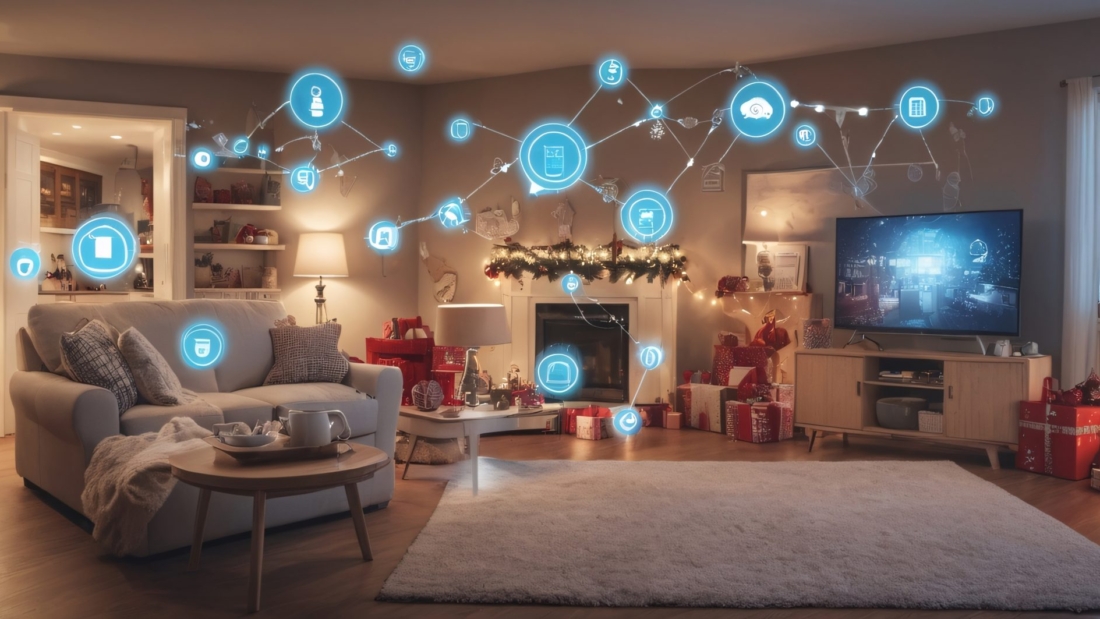Smart home technology has come a long way from being a niche hobby to becoming a mainstream household staple. From smart thermostats that adjust the temperature when you’re away to AI-powered assistants
Smart home technology has come a long way from being a niche hobby to becoming a mainstream household staple. From smart thermostats that adjust the temperature when you’re away to AI-powered assistants that play your favorite music on command, smart homes can be incredibly convenient. But, let’s be honest—not everyone gets it right the first time. In fact, many people unknowingly make mistakes that lead to frustration, security risks, and less-than-optimal performance. The good news? These mistakes are usually easy to fix. Let’s go through some of the most common ones and how you can correct them.
If you think cybercriminals are too busy targeting big corporations to care about your smart home, think again. Unsecured smart devices are like candy to hackers—easy to find and even easier to exploit. If you haven’t taken steps to secure your smart devices, you might be leaving the virtual front door wide open.
How to Fix It:
Use strong, unique passwords for each device.
Enable two-factor authentication (2FA) whenever possible.
Keep your device firmware up-to-date.
Segment your network by putting smart devices on a separate guest network.
Still worried? HomeTechHacker’s Personal Cybersecurity Manual book and Personal Cybersecurity Protection course can walk you through the process in detail.
Not all smart devices play nicely together. Incompatible devices can turn your dream of a seamlessly automated home into a patchwork of apps that barely communicate with each other.
How to Fix It:
Stick to a common platform like Home Assistant, Amazon Alexa, Google Home, or Apple HomeKit.
Check compatibility labels before purchasing new devices.
When possible, invest in devices that support open standards like Matter and Zigbee to ensure better interoperability.
HomeTechHacker’s Tech Advisor can help you pick devices that will be compatible with your smart home.
Ever tried to get your outdoor security camera to load, only to watch the spinning buffering wheel of doom? Weak Wi-Fi is one of the most common smart home frustrations.
How to Fix It:
Upgrade to a mesh Wi-Fi system if you have a larger home.
Position your router in a central location and away from interference.
Use Ethernet connections for bandwidth-hungry devices like streaming boxes and smart hubs.
Pro tip: Check out the Home Network Manual book for practical advice on optimizing your home network.
Editor’s Note: If you’re looking for personalized help with your smart home, Wi-Fi, cybersecurity, or home tech setup, HomeTechHacker offers one-on-one consulting sessions to guide you through setup, troubleshooting, and optimization. Our goal is to make your home tech simple, reliable, and tailored to your needs.
Smart home automations are supposed to simplify your life, not add a degree in rocket science to your daily routine. Too many complex automations can confuse family members and cause more frustration than convenience.
How to Fix It:
Start with simple automations like turning off lights when a room is empty.
Use “if-this-then-that” logic sparingly until you get more comfortable.
Regularly review and clean up outdated or redundant automations.
Sometimes less is more when it comes to smart home setups.
Editor’s Note: Here is some advice about how to get help with your smart home.
Your smart home is not a “set it and forget it” system. Devices need regular firmware updates to improve performance, fix bugs, and patch security vulnerabilities.
How to Fix It:
Set calendar reminders to check for device updates every month.
Reboot routers and hubs occasionally to keep them running smoothly.
Monitor your automation logs to catch any misfires early.
Smart devices are notorious for draining batteries and some draw more power than expected, especially if you have several running on the same circuit.
How to Fix It:
Use smart plugs with energy monitoring to track power consumption.
Opt for hardwired devices when possible.
Keep spare batteries or rechargeable backups for critical devices like smart locks.
A smart home should feel intuitive, not like a puzzle. If family members roll their eyes every time they try to use the smart lights, something needs to change.
How to Fix It:
Simplify controls by grouping devices into scenes.
Label switches and apps clearly.
Provide physical smart buttons or wall panels for less tech-savvy family members.
Smart homes are meant to make life easier, safer, and more enjoyable. If you’ve made some of these mistakes, don’t worry—you’re in good company. Take it step-by-step, learn from the process, and enjoy the convenience of a well-optimized, secure, and harmonious smart home. And remember, if you need more help with smart homes, home networking, or cybersecurity, HomeTechHacker.com has your back.

